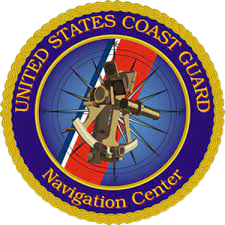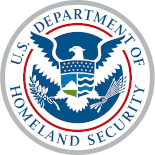For more information about each specific VTS, please visit their website or read their User Manual.
| New York | Houston | Berwick Bay |
| St. Mary's River | San Francisco | Puget Sound |
| Prince William Sound | Louisville | Notes |
Notes 1 and 2, at the bottom of this page, apply to all VTS ports. You may address questions concerning VTS to fldr-g-mwv@comdt.uscg.mil
New York3: "New York Traffic"4
Channel Designation: Ch 11 (156.550 MHz)/Ch 14 (156.700 MHz)
Monitoring Area: The navigable waters of the Lower New York Harbor bounded on the east by a line drawn from Norton Point to Breezy Point; on the south by a line connecting the entrance buoys at the Ambrose Channel, Swash Channel and Sandy Hook Channel to Sandy Hook Point; and on the southeast including the waters of the Sandy Hook Bay south to a line drawn at latitude 40 25' N.; then west into waters of the Raritan Bay to the Raritan River Rail Road Bridge; and then north including the waters of the Arthur Kill and Newark Bay to the Lehigh Valley Draw Bridge at latitude 40 41.95' N.; and then east including the waters of the Kill Van Kull and Upper New York Bay north to a line drawn east-west from the Holland Tunnel Ventilator Shaft at latitude 40 43.7' N.; longitude 74 01.6' W. in the Hudson River; and continuing east including the waters of the East River to the Throgs Neck Bridge, excluding the Harlem River.
Channel Designation: Ch 12 (156.600 MHz)
Monitoring Area: Each vessel at anchor within the above areas.
Houston3: "Houston Traffic" (The navigable waters north of 29 N., west of 94 20' W., south of 29 49' N., and east of 95 20' W.:)
Channel Designation: Ch 11 (156.550 MHz)
Monitoring Area: The navigable waters north of a line extending due west from the southern most end of Exxon Dock #1 (29 43.37' N., 95 01.27' W.).
Channel Designation: Ch 12 (156.600 MHz)
Monitoring Area: The navigable waters north of a line extending due west from the southern most end of Exxon Dock #1 (29 43.37' N., 95 01.27' W.)
Berwick Bay: "Berwick Traffic"
Channel Designation: Ch 11 (156.550 MHz)
Monitoring Area: The navigable waters south of 29 45' N., west of 91 10' W., north of 29 37' N., and east of 91 18' W.
St. Mary's River: "Soo Control"
Channel Designation: Ch 11 (156.550 MHz)/Ch 12 (156.600 MHz)
Monitoring Area: The navigable waters of the St. Marys River between 45 57' N. (De Tour Reef Light) and 46 38.7' N. (lle Parisienne Light), except the St. Marys Falls Canal and those navigable waters east of a line from 46 04.16'N. and 46 01.57' N. (La Pointe to Sims Point in Patagannissing Bay and Worsley Bay).
San Francisco3:
"San Francisco Offshore Vessel Movement Reporting Service"
Channel Designation: Ch 12 (156.600 MHz)
Monitoring Area: The waters within a 38 nautical mile radius of Mount Tamalpais (37 55.8' N., 122 34.6' W.) excluding the San Francisco Offshore Precautionary Area.
"San Francisco Traffic"
Channel Designation: Ch 14 (156.700 MHz)
Monitoring Area: The waters of the San Francisco Offshore Precautionary Area eastward to San Francisco Bay including its tributaries extending to the ports of Stockton, Sacramento and Redwood Clty.
Puget Sound5:
"Seattle Traffic"
Channel Designation: Ch 14 (156.700 MHz)
Monitoring Area: The navigable waters of Puget Sound, Hood Canal and adjacent waters south of a line connecting Nodule Point and Bush Point South of Admiralty inlet and south of a line drawn due east from the southernmost tip of Possession Point on Whidbey Island to the shoreline.
Channel Designation: Ch 5A (156.250 MHz)
Monitoring Area: Juan de Fuca Strait
Vessel Traffic Services in the area containing all Canadian and United States waters from 124°40’00’’W which intersects the Canadian and United States shorelines thence easterly through the Juan de Fuca Strait, including all waters south and east of a line from Church Point to Race Rocks light to the intersection of the Canada/United States International boundary to Hein Bank light and bell buoy to Cattle Point, and south of a line from Patos Island to Alden Bank lighted gong buoy "A" and north to the 49th parallel, including the United States Gulf Island waters; the navigable waters of the Strait of Georgia east of 122 52' W.; the San Juan Island Archipelago, Rosario Strait, Bellingham Bay; Admiralty Inlet north of a line connecting Nodule Point and Bush Point and all waters east of Whidbey Island north of a line drawn due east from the southernmost tip of Possession Point on Whidbey Island to the shoreline.
"Prince Rupert Traffic"
Channel Designation: Ch 74 (156.725 MHz)
Monitoring Area: West Coast Approaches to Juan de Fuca Strait.
Vessel Traffic Services from 124°40’00W in Juan de Fuca Strait westward to 125°15’00” W, and intersecting to the south to 48°00N from the west coast of Washington State are provided by the CCG from the Prince Rupert MCTS Centre located in Prince Rupert, B.C.
Vessels should check in with Prince Rupert Traffic on Ch74 when passing 126’00 W.
"Victoria Traffic"
Channel Designation: Ch 11 (156.550 MHz)
Monitoring Area: The navigable waters of the area containing all Canadian and United States waters north and east of a line from Church Point to Race Rocks light to the intersection of the Canada/United States International boundary to Hein Bank light and bell buoy to Cattle Point including all of Haro Strait, Boundary Passage and the southern portion of the Strait of Georgia.
Prince William Sound: "Valdez Traffic"
Channel Designation: Ch 13 (156.650 MHz)
Monitoring Area: The navigable waters south of 61 05' N., east of 147 20' W., north of 60 N., and west of 146 30' W.; and, all navigable waters in Port Valdez.
Louisville: "Louisville Traffic"
Channel Designation: Ch 13 (156.650 MHz)
Monitoring Area: The navigable waters of the Ohio River between McAlpine Locks (Mile 606) and Twelve Mile Island (Mile 593), only when the McAlpine upper pool gauge is at approximately 13.0 feet or above.
Notes:
- VTS regulations are denoted in 33 CFR Part 161. All geographic coordinates (latitude and longitude) are expressed in North American Datum of 1983 (NAD 83).
- In the event of a communication failure either by the vessel traffic center or the vessel or radio congestion on a designated VTS frequency, communications may be established on an alternate VTS frequency. The bridge-to-bridge navigational frequency 156.650 MHz (Channel 13), is monitored in each VTS area; and it may be used as an alternate frequency, however, only to the extent that doing so provides a level of safety beyond that provided by other means.
- Designated frequency monitoring is required within U.S. navigable waters. In areas which are outside the U.S. navigable waters, designated frequency monitoring is voluntary. However, prospective VTS Users are encouraged to monitor the designated frequency.
- VMRS participants shall make their initial report (Sail Plan) to New York Traffic on Channel 11 (156.550 MHz). All other reports, including the Final Report, shall be made on Channel 14 (156.700 MHz.). VMRS and other VTS Users shall monitor Channel 14 (156.700 MHz) while transiting the VTS area. New York Traffic may direct a vessel to monitor and report on either primary frequency depending on traffic density, weather conditions, or other safety factors. This does not require a vessel to monitor both primary frequencies.
- A Cooperative Vessel Traffic Service was established by the United States and Canada within adjoining waters. The appropriate vessel traffic center administers the rules issued by both nations; however, it will enforce only its own set of rules within its jurisdiction.
- Seattle Traffic may direct a vessel to monitor the other primary VTS frequency 156.250 MHz or 156.700 MHz (Channel 5A or 14) depending on traffic density, weather conditions, or other safety factors, rather than strictly adhering to the designated frequency required for each monitoring area as defined above. This does not require a vessel to monitor both primary frequencies.
- A portion of the Tofino Sector's monitoring area extends beyond the defined CVTS area. Designated frequency monitoring is voluntary in these portions outside of VTS jurisdiction, however, prospective VTS Users are encouraged to monitor the designated frequency.
- The bridge-to-bridge navigational frequency, 156.650 MHz (Channel 13), is used in these VTSs because the level of radiotelephone transmissions does not warrant a designated VTS frequency. The listening watch required by 26.05 of this chapter is not limited to the monitoring area.

